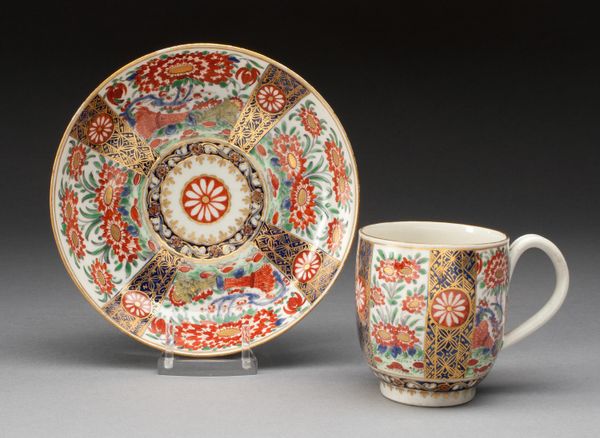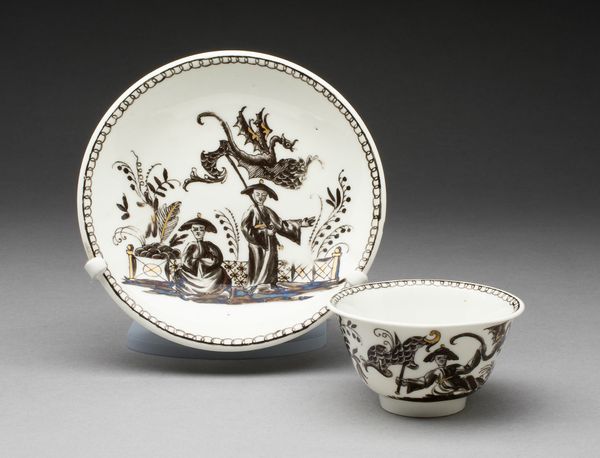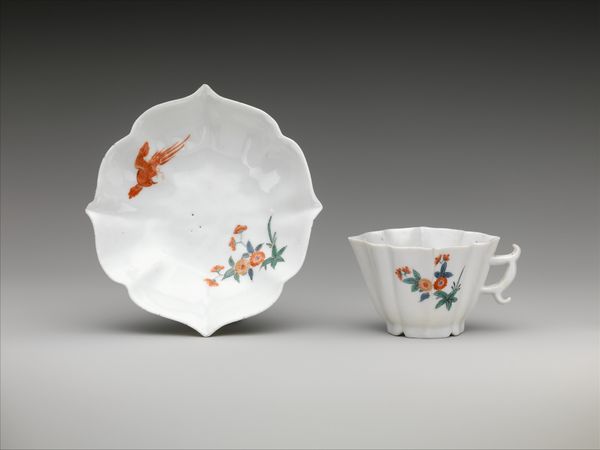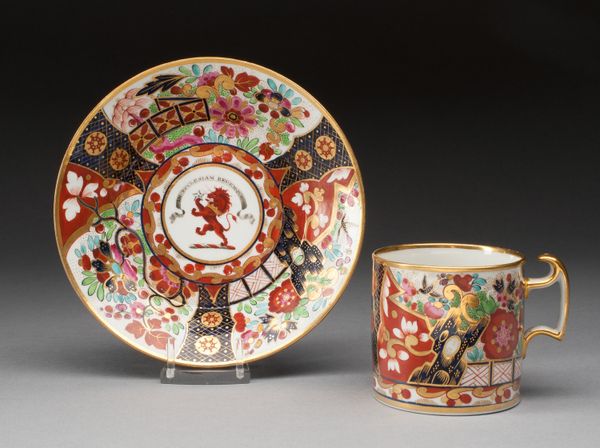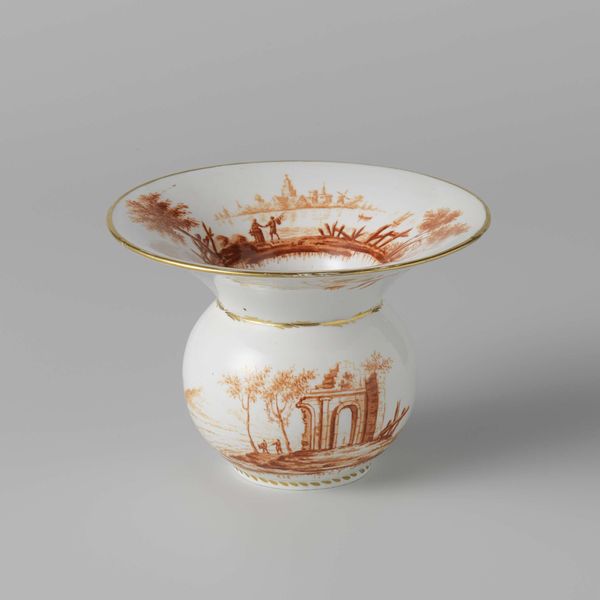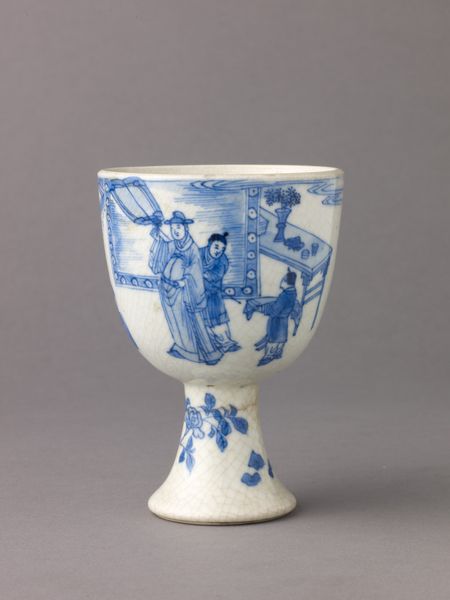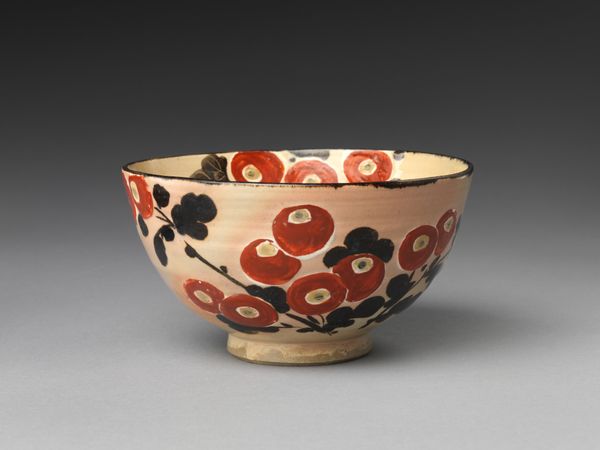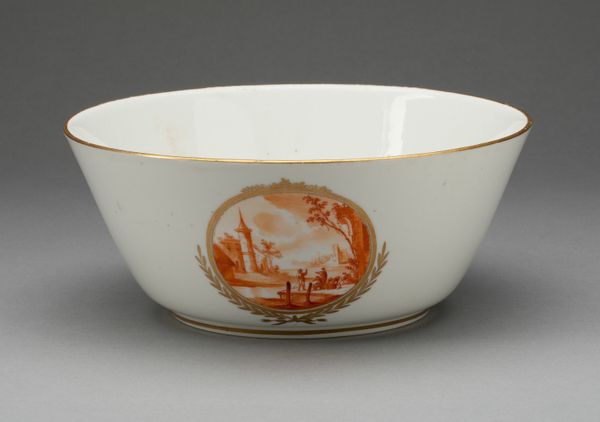
ceramic, porcelain, glass, sculpture
#
asian-art
#
ceramic
#
porcelain
#
glass
#
sculpture
#
ceramic
#
decorative-art
Dimensions: Overall (beaker .64): 3 × 2 3/4 in. (7.6 × 7 cm); Diameter (saucer .65): 4 3/4 in. (12.1 cm)
Copyright: Public Domain
Editor: So here we have an 18th-century porcelain beaker and saucer by the Miotti Family Workshop, currently housed at the Met. The reddish-brown designs have an interesting dreamlike quality...what are your first impressions of this piece? Curator: The dreamy quality you observe is a crucial aspect of its symbolic language. This wasn’t merely tableware; it was a conversation piece. Notice how Asian motifs were filtered through a European lens, an interpretation shaped by cultural exchange and colonial power dynamics. What specific elements suggest this to you? Editor: Well, there are architectural elements that resemble pagodas, yet they're rendered in this very European style. Almost like chinoiserie. Curator: Precisely. Chinoiserie embodies a European fascination with the ‘Orient’ - often romanticized and simplified. How do you think the original owner of this set might have perceived these symbols? What emotions might it have stirred in them? Editor: Perhaps a sense of exoticism and refinement. It also hints at global trade and wealth. Curator: Indeed. These weren’t just images; they were coded messages that communicated status, taste, and worldliness. Even the act of drinking from it became a performance of sophistication, imbued with cultural meaning. Editor: It’s amazing how everyday objects can be such potent carriers of cultural meaning. I never thought about it in quite that way before! Curator: My pleasure. Consider, from now on, what each image signifies, for a truer experience of art.
Comments
No comments
Be the first to comment and join the conversation on the ultimate creative platform.

